Fly anglers are overloaded with gear choices—rods, reels, boots, waders, lines, packs, bags, boxes, vests, apparel and more. It seems harder and harder to know what's worth coveting and what's worth ignoring. Gear reviews are a great way to explore in-depth what might be right for you, but not every piece of gear is suited to a full-length review and, even if it were, there's simply too much of it to get to. With that in mind, we periodically showcase what's working for us right now, to hopefully offer more helpful feedback on gear that's worth a second look.
All gear is welcome here: new, old, cheap, pricey, and so on. The goal is to provide useful feedback on gear that works—not to help gin up marketing for new products. Sometimes, great gear has just hit the market, other times it's been here doing good work all along. And, as always, our feedback comes with a promise: Unlike many magazines that publish gear roundups for products they've never so much as seen in person let alone put to work, we've actually used and field tested every piece of gear we write about.
The Redington Crux
The Redington Crux (pictured at top) has been around for a while, and there’s a reason for that. It’s a very solid product that continues to rise to the top of my rod quiver when I’m planning to chase bigger fish in freshwater. I’ve owned the 7-weight version of the Crux since it was released in 2018, and it’s been all over the world with me in my pursuit of everything from Patagonian browns to Canadian pike.
Billed as an all-purpose rod, I’ve even taken it with me to salty destinations, where it’s handled bonefish on the Mayan Riviera and Alaskan cohos in the Tongass National Forest. The Crux is, in my opinion, the best rod Redington has ever released. I get that the brand likely benefits from its relationship with Sage under the Farbank banner and, honestly, the Crux reminds me a lot of the old Sage Z-Axis fly rod that was released in the mid-2000s. It, too, was a hard-working, fast-action implement (particularly at the time) designed to be just as good at on-target short- and intermediate-range casts as it was at distance casting. The Crux is billed similarly, and it is a performer.
I like the rod’s slim profile and its ability to recover quickly, lift line with ease and deliver spot-on casts within 50 or 60 feet. Perhaps its best asset? The Redington Crux retails for $420, a refreshing price for a performance rod in today’s market where, often, it takes $1,000 to find a high-end rod worth damn. If you’re interested in very solid and dependable fast-action fly rod that won’t require a second mortgage, check out the Crux. You’ll be glad you did.
— Chris Hunt

Orvis Battenkill Fly Reel
I can’t explain why, but I get a great deal of satisfaction from the sounds of a clicking reel. Maybe it’s because I’m prone to anthropomorphize inanimate manmade objects. And though I don’t cotton much to people talking to me while I’m fishing, I like a chatty reel. For small waters, I also like a simple solid reel that can hang off the handle of a short 3-or 4-weight rod without throwing the whole thing off balance.
Simple with tight modern tolerances but designed with an eye toward our heritage and possessing that near-mystical and largely indescribable “feel” we all want in a reel — that's the Orvis Battenkill. Reducing the reel to its quality components and features seems almost blasphemous, but the sum of parts is just as great as the whole. For starters, it is machined from heavy-duty bar stock aluminum which means it's tough. A narrow spool means less weight but also less line stacking and makes retrieval speeds a little speedier. That’s rarely a concern when fishing where I fish and for what I fish for with the Battenkill II, but it’s nice to put a fish on the reel and then catch up to that fish when it makes a hook-loosening run right at you. The Battenkill is also easily adjusted for either right-or left-hand retrieve. And then there’s that click-and-pawl drag system — that wonderful clicking and the requirement to palm your reel, to become part of the system itself, learning how to apply just enough pressure to slow a blistering run while also sparing the tippet. That’s the Battenkill experience.
— Johnny Carrol Sain

Tenkara Rod Co Carbon Fiber Large Landing Net
Tenkara Rod Co is known for their tenkara rods, obviously, but they’ve branched out into some other products, including a new line of carbon fiber landing nets. I tested out their Large carbon fiber net, the biggest in the series, which boasts an 18-inch handle. Overall, the net is 36 inches long, making it ideal for use in a drift boat. I don’t mind the extra length on the net while wading, either, but I know most anglers like a smaller net for use while wading.
The net bag is 18 inches deep, and made from fish-friendly rubber, so it’s plenty big to handle large trout. Overall weight is right at 16 ounces, so it’s not awkwardly heavy to carry around. And it floats, as is customary with carbon fiber nets. I like the color scheme, as it’s easy to spot when I leave the net laying against rocks or in the streamside willows. This net will set you back $139, which is a fairly standard price for a good net like this one.
— Spencer Durrant
The Columbia Bora Bora Booney II Hat
The Columbia Bora Bora Booney II Hat became an addition to my fishing attire because my dermatologist warned me that I faced a future of micro-surgeries if I didn’t get my sun-protection act together. In searching for a “floppy” hat, I factored in a few things:
It had to be light. I wasn’t going to wander around with a thick canvas Indiana Jones fedora on my head that would soak up sweat and make my head smell like my feet. It had to be comfortable and easy to adjust. It had to be affordable.
Check, check, and check. No, it’s not the most fashionable headgear on the water, but it shades the tops of my ears, weighs next to nothing and I can toss it in the back seat of the truck without worrying that it’s going to lose its shape. It’s vented around the base to provide some heat relief, and it really does keep the sun off my face.
I’ve worn it on every fishing day this summer and I’ve become quite fond of it. And, at my age with my skin profile (read: hopelessly northern European), function beats fashion. Every time.
— Chris Hunt
BUY THE COLUMBIA BORA BORA BOONEY II

Slumberjack Big Timber 20 Sleeping Bag
Truck camping always evokes a bit of nostalgia for me. When I was growing up, it was how we always camped. Our trips were never about battling the elements or proving our worthiness against the worst Mother Nature could throw at us. Heck, if the weather was bad we didn’t go. We just wanted to live by the river for a few days, catch a few fish, eat a few s’mores, and sleep under the stars.
Seems like I always slept like a baby on those trips, but if temperature ratings for sleeping bags existed back then we didn’t know about them. This made things simple, though: If your sleeping bag wasn’t warm enough you put on more clothes. If it was too hot you shucked ‘em.
Of course, it’s nice to have more information and options nowadays. It’s also nice to find equipment with modern comfort but a design that hearkens back to yesteryear. Something like the Slumberjack Big Timber 20 sleeping bag.
By mid-February, the fishing bug had burrowed deep into our winter-weary souls so we decided to spend a day or two plying the currents of a tailwater fishery not far from home. Under the poles and netting of the only tent available to us at the time — a light summer model — and with nighttime temperatures dropping to the 30s, we slept snug as bugs in the red-flannel coziness of the Slumberjacks. I wore nothing but briefs and got quite warm, actually. But with a rating down to 20F thanks to Slumberloft™ synthetic insulation, 450D Polyester canvas on the outside, and lined with that gorgeous and soft poly-cotton red flannel I wasn’t surprised.
The Slumberjack is a roomy resting place with its 80 x 38 dimensions that can accommodate bigger folks up to 6’6” in length. It also features a large “toes up” foot box so your feet can lay naturally, weighs about 8 pounds (but not caring about weight is one of the beautiful things about truck camping), and can be zipped together with another Slumberjack for when you really need the added heat of another warm body.
For you folks in more northerly climes, the Slumberjack Big Timber also comes in a 0F model.
— Johnny Sain





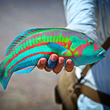


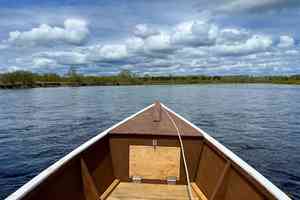


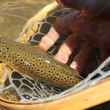
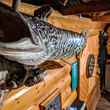








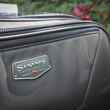





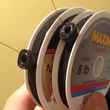
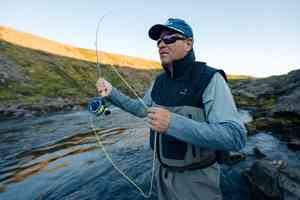




Comments